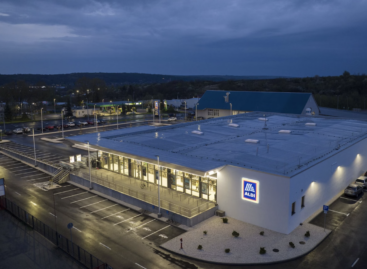Farmers must pay attention to new rules in order to receive subsidies
In accordance with EU regulations, compared to the previous ones, sustainability has been given a more significant role in the new Common Agricultural Policy (CAP), but at the same time, by increasing the level of national co-financing, the Hungarian government sought to balance the environmental and competitiveness aspects – Zsolt Feldman indicated in his presentation on Thursday, held in Komárom forum.

(Photo: Pixabay)
The state secretary of the Ministry of Agriculture responsible for agriculture and rural development, speaking about the support conditions for the agricultural economy between 2023-2027, said that Hungarian farmers must prepare for several important changes – prescribed by the European Union – in the period until 2027. Based on the regulations regarding the Correct Agricultural and Environmental Status (HMKÁ), with a few exceptions, for example, those who farm on arable land of less than 10 hectares, or whose land has at least 75% permanent grassland, all farmers will be obliged to designate a certain part of their arable land as non-productive land or landscape maintain as an item. The various landscape elements – such as the edge of the field, the erosion protection strip, the tree-shrub strip, the water protection strip not under arable cultivation or the small wetland area can be supported if they are accounted for in the fulfillment of the HMKÁ regulation, but the condition is that the field is no more than You can occupy 50% of it, even if there are more landscape elements on the board and even if it is below the eligibility threshold of 0.25 hectares – emphasized the state secretary.
Zsolt Feldman said that in relation to the mandatory maintenance of the non-productive area or landscape element, two options will be available in relation to the size of all arable land on the farm
According to the first, an area corresponding to at least 4% of the arable land must be reserved specifically as an area for non-production purposes or as a landscape element – including land left fallow. The second option is to maintain a fallow area or a non-productive landscape element in at least 3% of at least 7% of your arable land, and in the remaining 4% landscape element, fallow land, ecological re-sowing, or nitrogen-fixing plants can be.
For this year, the union still allows the producer to count the fallow land towards the fulfillment of the HMKÁ even if he grows arable crops on it (except for corn and soybeans, which the European Commission did not allow).
AM
Related news
AM: Government helps farmers with a loan moratorium
🎧 Hallgasd a cikket: Lejátszás Szünet Folytatás Leállítás Nyelv: Auto…
Read more >More than 100 Hungarian farmers also demonstrated in Brussels
🎧 Hallgasd a cikket: Lejátszás Szünet Folytatás Leállítás Nyelv: Auto…
Read more >NAK: Domestic producers await customers with an ample supply of all pine species
🎧 Hallgasd a cikket: Lejátszás Szünet Folytatás Leállítás Nyelv: Auto…
Read more >Related news
Temu is crushing domestic webshops – Christmas won’t change either
🎧 Hallgasd a cikket: Lejátszás Szünet Folytatás Leállítás Nyelv: Auto…
Read more >The Hungarian Food Bank is putting together 44,000 food packages from the proceeds of ALDI’s first Advent market
🎧 Hallgasd a cikket: Lejátszás Szünet Folytatás Leállítás Nyelv: Auto…
Read more >How to prepare for the holidays with your four-legged friend
🎧 Hallgasd a cikket: Lejátszás Szünet Folytatás Leállítás Nyelv: Auto…
Read more >






